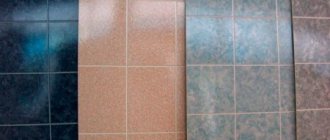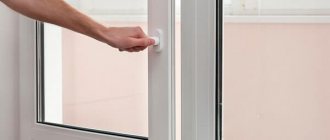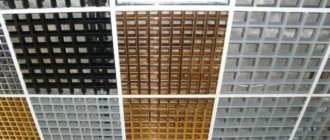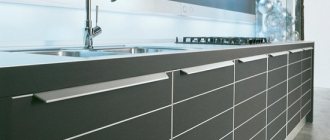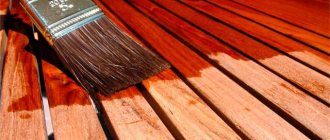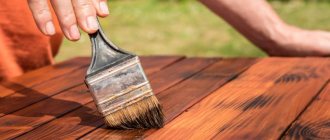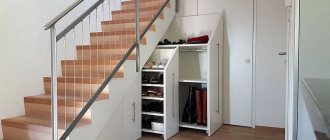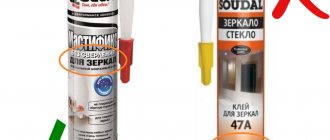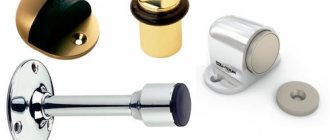When arranging a floor in the same room, completely different types of floor coverings are often used. For aesthetic and practical design of the joints between them, a high-quality cork expansion joint is used. It allows you to successfully implement bold design ideas and significantly increases the service life of the subfloor in areas with intense load. Using such a leveler, you can get the most even surface possible without the use of previously popular thresholds.
The undeniable advantage of using cork between tiles and laminate is the ability to easily give it any shade using tinting Source 24tv.ua
Description of material
A cork compensator instead of a plinth is a strip formed from crushed cork by pressing. Under external influence, it is capable of contracting and also returning to its original position. The end of the strip is usually coated with a coloring agent and polyurethane varnish. A huge range of colors for such products makes it easy to choose the desired shade for sealing the joint between different floor coverings.
A correctly selected cork expansion joint for laminate flooring is not at all noticeable and makes the transition unnoticeable. At the same time, the high-contrast leveler emphasizes the boundary line of zones in the room, giving the home a stylish look. In addition, cork elements prevent destruction of contacting materials and protect them from negative external influences.
On the market, cork expansion joints are presented in different colors, which allows you to choose the best option that will fit perfectly into the interior of a particular room Source bazazakonov.ru
Main characteristics
This compensator is completely natural. It is made of pressed cork, thanks to which it perfectly withstands temperature and humidity changes.
During the renovation process, there is often a need to zone a room, especially in hallways, by using different floor coverings. However, the question arises of how to join different materials. This is when a cork compensator comes to the rescue. It allows you to make transitions less noticeable. This material can be tinted in different colors, so it can fit into any coating.
Coating the panel with 10 layers of varnish (or less) allows you to preserve the color and quality of the coating for many years, which cannot be said about ordinary corks without a special coating.
On a note
Cork is great for transitions between tiles, hardwood floors, laminate, hardwood and other surfaces. In the absence of a compensator, if you join a wooden covering with any other, very soon there will be a need to make repairs again, because wood tends to expand due to absorbed moisture and rising temperature. Cork floor thresholds compensate for such expansion by their own compression to the required distance.
The use of rubber for thresholds is not justified, since over time it can harden and cease to perform its functions.
Why do you need to join floor coverings?
When designing modern interiors, zoning of rooms is widely used. It is often created by installing several different floor coverings in one room. For example, the kitchen can be divided into two zones: for cooking and dining. It is better to lay the first one with tiles, the second one with laminate.
Also, with the help of tile and laminate coverings laid within the room, it is possible to visually increase its dimensions. And the successful use of a cork expansion joint will favorably emphasize the features of the room design.
How can you connect the transition?
To neatly design the gap between functional areas, four materials are most often used.
Grout
An easy way to seal winding, shallow seams. Such thresholds are difficult to find, and other fillers will not look so organic. Often in modern interiors there is an interesting way of finishing the floor: polygonal ceramic parts “incline” a little into an area with a different coating. This separates the hallway area from the rest of the house and the kitchen area from the living room. In this case, the transition is also carried out using grout. Do it in the following order:
- Carry out preparatory work.
- Treat the edges of the second material with silicone compound.
- Fill the resulting seam halfway with it.
- Wait for it to dry.
- Dilute the grout, spread it on top and level it with a spatula.
- Wipe the finished dried layer with a damp cloth and cover it with clear varnish to extend its service life.
Photo: Instagram @remont100lvl
Photo: Instagram @remont100lvl
Silicone and acrylic sealant
Joining two sections with elastic sealant is even easier than with grout. The advantage of the method is that there is no need to additionally treat the boards to protect them from moisture. But there is one point - you need to take into account that after drying the filler will turn light brown. The acrylic filler can be painted in a suitable shade after it has dried. Both expansion joints are suitable for renovation work in new buildings, as they are able to adapt to the shrinkage of the building.
Sequence of work:
- Place masking tape on both sides of the seam so you don’t have to waste time scrubbing it off later.
- Make a hole in the silicone paste tube so that it can be squeezed out, or insert it into a special gun.
- Fill the gap so that the sealant extends slightly above the floor surface.
- Use a spatula to remove excess mixture. If you don’t have a spatula, you can wait until the mixture dries and cut off the excess.
Keep in mind that it takes one or two days for the sealant to dry completely. Silicone expansion joints are recommended for use in rooms where the flooring is secured with glue or fasteners.
Photo: Instagram @42m2.ofhappiness
Photo: Instagram @42m2.ofhappiness
Photo: Instagram @42m2.ofhappiness
Photo: Instagram @prinesite_pechenki
Liquid plug
Liquid cork for laminate and tile joints is a moisture-resistant mixture of an adhesive base and cork chips. It has an unusual texture and looks good in seams no larger than 7 mm. On wide crossings it will look alien. This is a simple connection method for areas of any shape.
The hole that is filled with the mass is first cleaned of dust and degreased.
Rules for working with the mixture:
- The coating levels must match. If there is a slight difference, the glue is aligned along the higher edge.
- Do not let the cork get on the floor, as it is difficult to wipe off and, once dry, almost impossible. You can pre-coat the floor with oil or apply masking tape to it.
- The material must be sanded a day after pouring, until it hardens.
The layer turns out to be very durable and it is almost impossible to remove it.
Photo: Instagram @centraparketarf
Photo: Instagram @parquet_design
Cork compensator
One of the most popular ways to design boundaries between two floor coverings. The filler is a soft, pressed lath or whole sheets with the same characteristics. The compensator has several advantages:
- Possibility to choose the appropriate color.
- Ability to withstand building shrinkage and dimensional fluctuations of laminated strips.
- Suitable for wide seams.
- Looks beautiful in the interior.
For this material it is also desirable that both areas are at the same level. Otherwise, the result will not look aesthetically pleasing.
Sequence of working with the filler:
- Adjust the rail to the desired size or cut the part from the sheet.
- Apply adhesive to the entire width of the laminate or tile, and a thin layer of sealant to the bottom.
- Glue the compensator and cover it on top with an antiseptic and clear varnish.
- The rail can be tinted, but you need to take into account that it absorbs paint well and the color turns out saturated.
Photo: Instagram @centrpola.ru
Photo: Instagram @centrpola.ru
Pros of using cork
The cork compensator has multiple advantages. The most important of them are:
- Environmental friendliness. The material does not emit harmful substances at all (including during combustion), which allows it to be used in residential buildings and public buildings. To prevent possible fires of this building material, it is treated with a protective agent.
- Low thermal conductivity. It is a consequence of the unique porous structure, which allows for better heat retention in the home.
- Excellent soundproofing qualities. The material is capable of absorbing noise (up to 27 dB).
- Resistance to temperature changes and ultraviolet radiation. At extreme temperatures, the valuable properties of cork material are completely preserved.
- Waterproof. High indoor humidity is not a contraindication to the use of cork.
- Pronounced antiseptic characteristics. Such building materials do not rot, are resistant to rodents, and mold.
- Huge variety of shades. Allows you to select the required color to hide the sharp transition from one coating to another. The cork expansion joint can be painted in any color, which means you can get the shade of the desired saturation.
- Easy to install. Proper installation of elements does not require special knowledge or skills.
- Long service life. Over time, cork does not lose its valuable properties, and therefore does not require replacement for many years.
Technology for filling joints between laminate and tiles using liquid cork
To complete the work, you need to prepare a stationery knife, oil and a tube filled with the mixture. The sharp corners of the tile are ground off, and then both coatings are wiped with oil using cotton pads or swabs. The mixture in liquid form is placed in a prepared tube, and then it is gradually squeezed into the joints between the board and the tile. Liquid cork is applied with a reserve, since it shrinks, but so that the material does not fall on the surface, it is very difficult to clean it off. If the surface of both materials is located at the same level, then the joining can be done without any special complications. With different heights of surfaces, they focus on the material that is located above, and level the cork covering over it.
After the liquid cork has hardened, the excess areas must be cut off using a utility knife; this work is done carefully so as not to damage the floor surface. This is usually done after a day, and the defects are removed immediately, before the glue dries. If the floors are oiled, this is easy to do. Then grinding and scraping are done, but the last stage will not be easy to complete. Liquid stopper is not used to protect the edges of the material, otherwise it will be firmly fixed to the base and it will be impossible to detach it. The mixture cannot be applied or leveled above the required level, as it will not fit tightly and cracks may appear. In order to perform grinding and eliminate excess, the material should not gain full strength, that is, this work is performed 24 hours after application. Thanks to the application of liquid cork into the joint between the laminate and the tile, an almost flat surface is obtained, without the use of thresholds. In the kitchen, some areas are laid with tiles, for example, near the stove, sink, washing machine, since this material is easy to clean and resistant to humidity. And the laminate is laid on the remaining surface, all connecting seams between the material are filled with liquid cork.
Laminate is not so resistant to moisture that it should be installed in damp rooms; it can become deformed and lose its original appearance. For this reason, in the bathroom the surface is made more practical, that is, tiles are laid, while in other rooms you can use laminate. Since it is not advisable to lay tiles in ordinary rooms, they are a cold coating. Thanks to this separation, a gap appears between rooms and materials, which is closed in various ways, one of them is the use of liquid cork, it is a practical and durable material.
Varieties
Modern cork sealant is available in two types: solid and liquid. Each of them has its own advantages and is used to achieve specific goals.
Solid
It is produced in the form of strips with a length of 0.9-3 m, a width of up to 10 cm, and a thickness of about 20 mm. They are coated with several layers of polyurethane varnish, which reliably protects them from the adverse effects of the environment, and are also painted in various colors. Such products are made from cork tree bark by pressing inside thermal chambers. In the process of forming elements, no chemicals or glue are used.
Cork material, cut in the shape of a narrow threshold, is placed in the joint between the coverings in order to create an even expansion joint. In this case, it is allowed to use painted products or with a natural shade. The latter are then tinted to the most suitable color.
Liquid
It is a homogeneous mixture containing cork mass, solvent, and glue. Produced in sealed packages (usually 0.5 l). After application, the liquid compensator retains its structure and does not shrink under heavy load. At the junction, it ensures minimal movement (expansion, contraction) of the floor coverings: it does not at all affect the decorative appearance of the floor. Additionally, this product is used to get rid of parquet squeaks and seal cracks between slats.
Important information! Liquid cork sealant sets almost instantly. Therefore, it should be applied quickly and very carefully.
The main disadvantage of a liquid cork expansion joint is the need for quick installation due to the very high setting speed of the material. Source cezarusa.com
Prices for cork expansion joints
The cost of cork expansion joints is low.
The price of a solid cork seal ranges from 100 to 150 rubles per piece. A sheet compensator costs 1000 rubles per sheet. The cost of liquid compensator depends on the region and manufacturer. The price range for liquid stopper is from 160 to 200 rubles per 0.5 liter package.
You can buy a cork compensator in all cities of Russia: Penza, Samara, Yekaterinburg, Voronezh, Moscow, St. Petersburg, Tyumen, Kazan, Kaliningrad, Krasnodar, as well as outside our country: in Minsk, Kiev and others. Leroy Merlin consultants will help you choose the right building material.
Rules of application
In order for the cork expansion joint between the tiles and the laminate to look attractive, it is important to strictly follow the installation requirements:
- The edges of the contacting sides of the floor coverings must be even.
- The laminate material must be treated with a moisture-proof solution.
- In the case of laying tile products to the joint with a cut, they must first be sanded.
- After sanding the materials, there are always microcracks that need to be filled with sealant. The latter additionally protects the laminate from the harmful effects of moisture.
- Only cut the cork with a sharp knife.
A correctly designed joint between tiles and laminate looks quite attractive and does not lose its shape over time. Source stroy-podskazka.ru
Forms of joints between laminate and tiles
The connection of floor coverings can vary in configuration and length. Depending on its shape, there are three main types of joints.
Straight line
The easiest joint to arrange. It can be issued as a threshold or done without it. If the seam is located in the space under the interior door, a threshold is considered mandatory.
Photo: Instagram remont.detected
Curved joint
Not an easy option to make. The main difficulty lies in precise cutting of the material, which requires a professional tool. The seam can be made without a threshold or with it, but if mistakes were made during the work or defects appeared when cutting materials, only a threshold can disguise them.
broken line
An effective connection that involves laying uncut tiles end-to-end with laminate flooring. The main problem is the exact fit of the parts. The threshold in this case is extremely undesirable, since it greatly spoils the appearance of the floor.
Installation process
Installation of a solid cork expansion joint for laminate flooring must be done in the following order:
- Clean the joint between the floor coverings to be laid so that it is uniform along its entire length.
- The seal should not rise above the floor by more than 1 mm. Otherwise, it needs to be carefully trimmed.
- Place glue in a gun and apply it to the edges of the laminate along the seam.
- Place the cork expansion joint at a slight angle and glue the end.
- Insert a container of acrylic sealant into the gun.
- Lift the upper part of the installed element, bend it, fill it with a sealing agent, and press it.
- Using a damp sponge, remove excess adhesive.
- Wipe the threshold with a clean rag.
- Lay the tiles on the appropriate level, using special glue.
Cork products are quite flexible, they can be used for arranging curved joints.
It is important to join tiles and laminate using a cork expansion joint according to technology Source i.ytimg.com
Types of thresholds
Such a variety of profiles makes it difficult for property owners to choose. To make this process easier, we recommend that you familiarize yourself with the classification of thresholds for tiles and laminates. They are divided into several categories; we’ll talk about each type in more detail later.
Not every joint can be designed independently: in some cases it is better to delegate the work of finishing the gap to a professional.
According to the profile section shape
In most cases, the latter option is used for tiles and laminate. It supports operation with multi-level floors.
One of the types of threshold used when joining laminate and tiles is called final.
By installation type
There are models of thresholds for porcelain stoneware and laminate that do not require the use of a drill. But as a rule, in apartments the following connecting component is used:
- Steel profile with through fastening. It looks like a special strip with which the joint is covered. A strip of metal presses the edge of the joint to the floor surface. For fixation, self-tapping screws with a hidden head are used. The profile is ideal for decorating different levels of materials or in case of imprecise cutting. It is necessary to seal loose edges with silicone sealant;
- H-shaped design. This variation does not require drilling. To connect, the bottom shelf is inserted behind the panel, after which the tile is inserted into the opposite groove with an adhesive base. The gaps are treated with a special mixture for tiles, and the side of the laminate is filled with a reliable sealant. Very often this is done with acrylic or silicone compounds;
- Demountable H-shaped panel. It is represented by two T-shaped structures, which are fixed to each other using special legs. Once installed, the top decorative piece is placed into the bottom clamp until it snaps into place.
The most common type of cracks that need to be sealed.
The choice of products from this range is based on preferences for the installation method and the type of floor finishing materials.
Such seams are most often finished with the help of additional elements - thresholds.
Based on materials
An equally important aspect of the issue is the raw materials that were used in the manufacture of thresholds for tiles and laminate. Therefore, the quality of the product must be checked before purchase and installation. There are cork products used to connect two different materials. They are more environmentally friendly and expensive. Therefore, they are used in repairs extremely rarely, for example, to decoratively hide small joints.
As a rule, fractures are caused by the fact that the tiles are not trimmed and the laminate is laid end-to-end against them.
There are also rubber, that is, rubber options. The composition includes polymers, which allows for elasticity. But the most popular solutions are steel, aluminum and PVC. We will talk about them in more detail.
This ensures a harmonious appearance of the entire coating.
Metal
Flexible metal profiles are used in wavy curves, but can also be used in straight joints in a room. To ensure resistance to wear, a special powder layer is added to them. It protects products from mechanical damage.
Chrome-plated parts with a mirror coating, which retains its performance properties for many years, have an attractive and impressive appearance.
Aluminum
- with holes for fasteners (screws);
- hidden fastening;
- self-adhesive variations.
High mechanical strength, corrosion resistance, and durability make such products the most popular.
The choice is based on the preferences of the apartment owners and the final result.
Purpose
Cork is an original and elastic raw material. Thanks to it, important tasks in the construction field can be solved quite simply, and the products are widely used for the following work:
- providing roof protective covering;
- facade finishing;
- finishing of partitions and ceilings;
- minimizing noise and vibrations;
- thermal insulation;
- anti-corrosion coating of metal structures;
- protection against accumulation of excess moisture;
- sound insulation of carriages, cabins, cars;
- decorative use in the interior;
- protection of low-temperature and high-temperature product pipelines;
- fire protection of various structures;
- insulation of loggias and balconies.
The properties of cork make it possible to use the product for sealing joints between different surfaces and structural materials, for example, between a floor covering and a wall, for finishing joints between tiles and PVC panels, wooden surfaces and laminate. During this work, the seams will be reliably sealed even with large temperature changes, as a result of which deformation of the main composition of the product occurs. This feature is achieved due to the elasticity of the cork.
In addition, this material is successfully used as insulation for door and window openings. Applying liquid cork to the joints of slopes and frames, as well as the seams of the door frame, will eliminate the possibility of drafts in the room.
Liquid cork is a versatile material that finds application as a base material for wall decoration, including indoor and outdoor use.
As a result of its use, a coating is formed that has the following properties and features:
- attractive exterior;
- simple surface application technology;
- water repellency;
- good vapor permeability;
- heat and sound insulation.
The combination of the above properties makes it possible to solve a number of basic problems. First of all, the material eliminates the need to find workers to finish the walls. The processing of the facade or walls in the rooms can be carried out by specialists without serious construction qualifications, which makes it possible to do everything yourself.
In addition, the surface covered with liquid cork looks luxurious and expensive, eliminating the need to purchase expensive finishing materials.
Reliable waterproofing provides high-quality protection from rain moisture, which significantly extends the overall service life of the house. The excellent sound insulation provided by the material solves the problem with street noise, so the maximum proximity to the roadway inside the house will not be felt. Cork perfectly dampens noise and vibration.
Sprayed liquid cork allows water vapor to penetrate through surfaces, which has a beneficial effect on the microclimate inside the house.
When installing high-quality parquet flooring, one of the main points is sealing the joints that appear between the board and the walls. This task is made difficult by the fact that the surfaces have different mechanical properties. Natural wood differs from plaster or tiles in that it can change its geometry due to temperature changes and the effect of moisture on the raw material. Even after a short period of time after installation, parquet may swell or begin to creak due to new formations in the form of gaps. In such cases, it is the liquid coating that will be able to solve such a complex, at first glance, problem.
This is explained by the resilience and elasticity of the cork, which gives the board some freedom. Thanks to this, the material expands, but without compromising the plane of its laying.
The product perfectly fills cracks in parquet due to its elasticity, providing equal pressure on all elements. This is why the formation of gaps is eliminated. At the same time, the material retains excellent strength, which does not limit the possibility of using the coating for its intended purpose. Cork is widely used in parquet repairs as a material for sealing cracks.
Liquid stopper has a variety of applications. Almost anywhere where noise insulation, tightness and thermal insulation are needed, the material will come in handy. Moreover, almost all work with the products can be easily done with your own hands, which will save on paying for hired labor and eliminate the need to purchase expensive materials.
